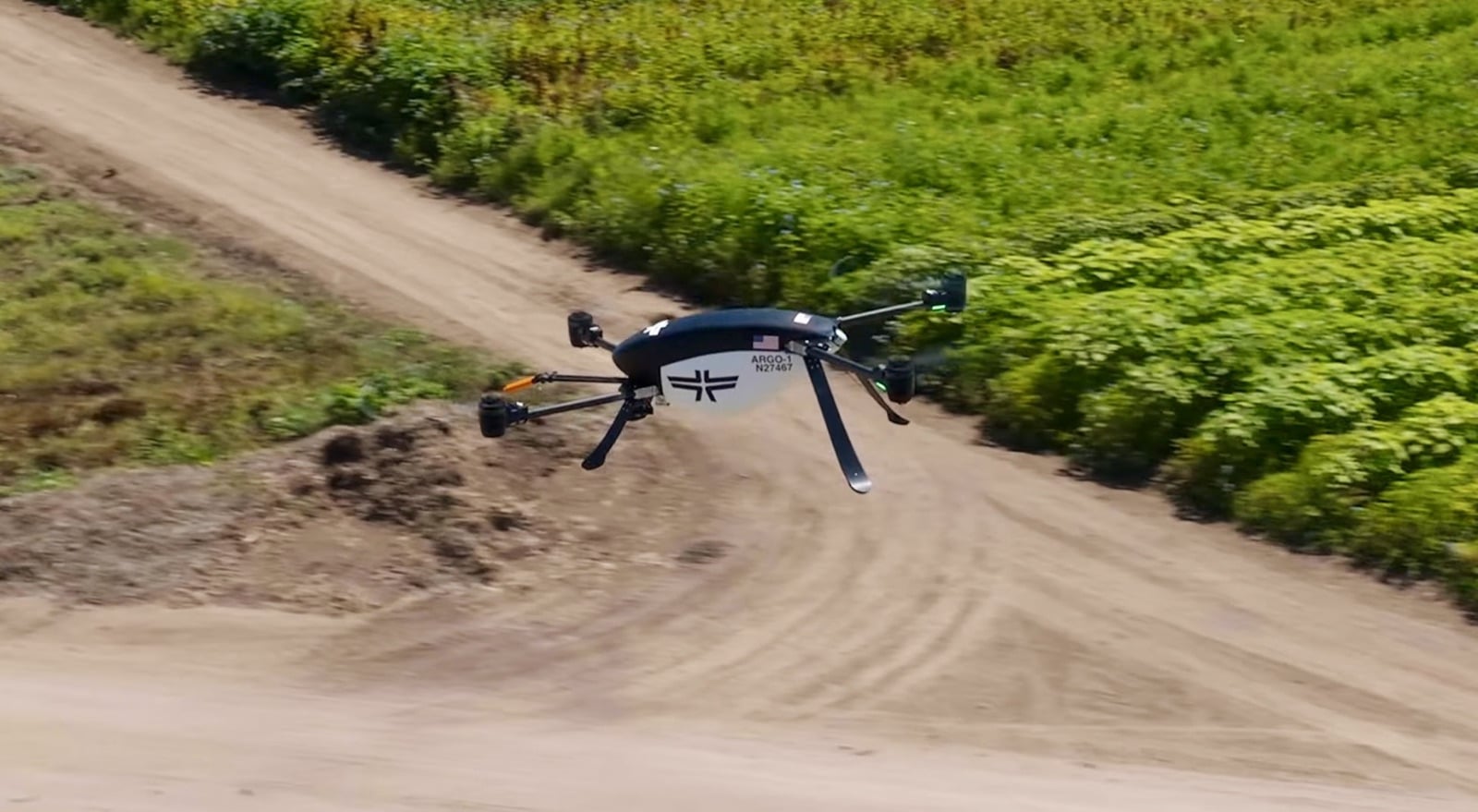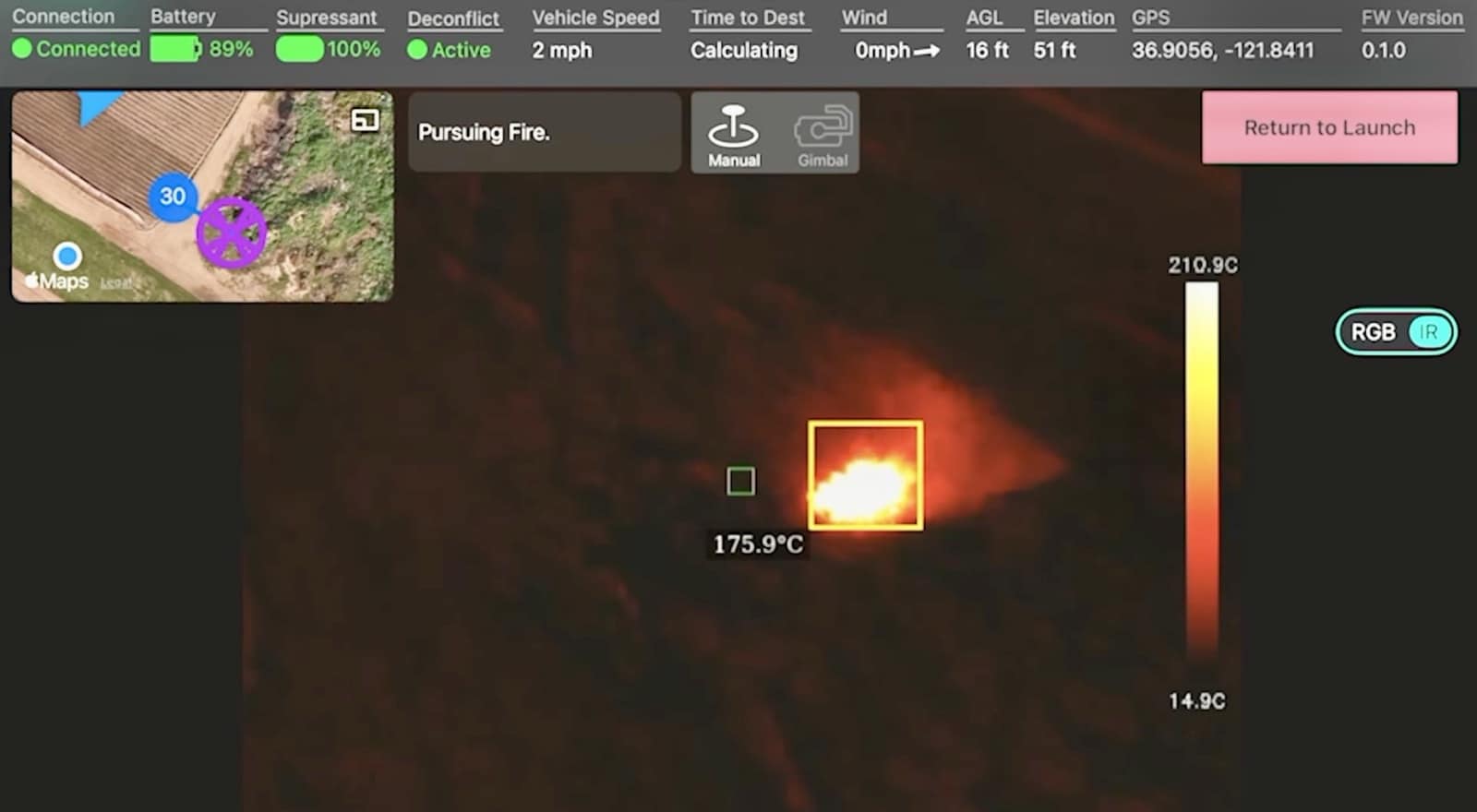Firefighting Drone Startup Seneca Secures Record $60M to Deploy Autonomous Suppression System

California-based startup Seneca has emerged from stealth mode with $60 million in funding to deploy AI-powered autonomous firefighting drones capable of suppressing wildfires within minutes of detection. The round, believed to be the largest early-stage investment in wildfire defense technology, was led by Caffeinated Capital and Convective Capital.
Founded by Stuart Landesberg—who previously built sustainable consumer products company Grove Collaborative into a $1.5 billion public company—Seneca aims to fill a critical gap in wildfire response as experts predict 2025 will become the most destructive fire year in U.S. history.

AI-Powered Drones Target Critical Response Window
Seneca’s autonomous suppression system deploys drones carrying more than 100 pounds (45 kg) of fire suppressant at pressures exceeding 100 PSI. The aircraft use AI-driven navigation with infrared sensors to detect, target, and knock down fires before they escalate into megafires.
According to the company, the drones can launch from anywhere with just an approximate fire location, cutting response times to under 10 minutes. Traditional firefighting aircraft often arrive too late or remain grounded by smoke and poor visibility conditions.
“Firefighters are heroes who run into burning buildings and fly helicopters into hurricane-force winds to protect lives and property,” said Landesberg. “Our hope is to empower firefighters in situations that were previously impossible, unsafe, or inefficient. The American way of life has always been about pioneering. Technology is how we will protect communities, preserve our environment, and create a more resilient civilization.”

From Consumer Products to Climate Resilience
Landesberg’s pivot from sustainable household goods to wildfire defense emerged from firsthand exposure to California’s escalating fire crisis. After leading Grove Collaborative for over a decade, he began researching wildfire technology in late 2023 and quickly recognized that existing tools weren’t meeting the challenge.
Fast Company reports that Landesberg conducted test flights with firefighters in Aspen, Colorado, where drones detected simulated fires and blasted them with suppressant. The company has since completed hundreds of missions on live fires, working closely with fire agencies in four states to refine the technology.
The system operates in strike teams of five aircraft, collectively delivering 500 to 1,000 pounds (227 to 454 kg) of aerated Class A foam per mission. The drones are portable enough to fit in a pickup truck yet powerful enough to create foam barriers 1,280 feet long and three feet wide—sufficient to stop or significantly slow an advancing fire.

Addressing an Escalating Crisis
Wildfire intensity in the United States has more than doubled over the past two decades, inflicting an estimated $1 trillion in annual economic losses and endangering 115 million Americans. Recent blazes in Los Angeles alone are projected to exceed $250 billion in damage.
“A century of neglect and mismanagement has primed our forests and communities for catastrophic wildfire—meaning if we don’t catch fire quickly in adverse conditions we can rarely catch it at all,” said Bill Clerico, Managing Partner of Convective Capital. “Seneca’s vision for rapid, drone-based response is a critical missing capability that allows firefighters to conduct suppression operations when it is still feasible to do so.”
The funding round included participation from First Round Capital, Transition VC, Advance Venture Partners, Nextview Ventures, Bullpen Capital, Stepstone Group, DCVC, Offline Ventures, Roar Capital, and Slow Ventures.

Fire Service Leaders Back Technology
Seneca developed its systems in collaboration with fire agencies including San Bernardino County Fire, Aspen Fire Department, and fire districts across the American West. The company’s advisory board includes Dr. Lori Moore-Merrell, former U.S. Fire Administrator; John Mills, founder and CEO of wildfire tracking app Watch Duty; and Rick Balentine, recently retired Fire Chief of Aspen after 25 years of service.
“Rapid initial attack is the best chance we have to save money, property, and lives,” said Dan Munsey, Fire Chief of San Bernardino County Fire Protection District and Chairperson of the International Association of Fire Chiefs Technology Council. “In San Bernardino County we have a vision of keeping wildfire 100 square feet or less… this is a far departure from the industry standard of 10 acres or less. We can only achieve this ambitious goal with an ambitious vision. Seneca is a huge part of that vision.”
The drones incorporate autonomous obstacle avoidance, ADS-B integration, and Remote ID compliance. They can be launched from a portable tablet and deployed remotely without requiring airports or helitack bases—addressing what fire officials call the “pre-dawn gap” when air and ground crews are typically unavailable but fires begin spreading.
2026 Deployment Timeline
Seneca plans to use the funding to improve capabilities, harden the system for mission-critical environments, increase production, and roll out initial deployments during the 2026 fire season. The company aims to protect 500 million acres in the U.S. and allied nations by 2035.
Unlike detection-focused systems like Pano AI or Germany’s Dryad Networks, Seneca emphasizes active fire suppression—a distinction that attracted significant venture capital despite challenges facing the wildfire tech sector. Robotics 88, which won the 2024 RoboBusiness Pitchfire competition for drone-based prescribed burn planning, closed earlier this year.
DroneXL’s Take
Seneca’s $60 million raise signals that venture capital is finally willing to bet big on autonomous suppression rather than just detection and surveillance. DroneXL has covered the evolution of firefighting drones extensively—from Portugal’s SAP system to Carnegie Mellon’s AI navigation to NASA’s ACERO Act initiatives—but most developments have focused on reconnaissance or igniting prescribed burns.
Seneca represents a meaningful leap: autonomous aircraft that actually put out fires without human pilots flying into hazardous conditions. The technology addresses a genuine operational gap that fire chiefs have identified—the critical window between initial spark and uncontrollable megafire that traditional aircraft can’t reach fast enough.
The real test comes in 2026. Landesberg brings proven operational discipline from building Grove Collaborative, and the company’s collaboration with working fire departments suggests they’re iterating based on actual firefighter feedback rather than Silicon Valley assumptions. The involvement of fire service leaders like Dan Munsey and Rick Balentine on the advisory board adds credibility that many wildfire tech startups lack.
However, questions remain about production scaling, unit economics, and whether fire departments and utilities will adopt the technology at the pace needed to justify a $60 million valuation. The wildfire tech graveyard includes plenty of promising concepts that couldn’t overcome regulatory hurdles, funding gaps, or operational challenges in the field.
If Seneca delivers on its 2026 deployment timeline and the systems perform as advertised during California’s next fire season, it could reshape wildfire suppression the way DJI drones transformed search-and-rescue operations. If not, it becomes another case study in the difficulty of commercializing emergency response technology.
What do you think? Share your thoughts in the comments below.
Discover more from DroneXL.co
Subscribe to get the latest posts sent to your email.
Check out our Classic Line of T-Shirts, Polos, Hoodies and more in our new store today!

MAKE YOUR VOICE HEARD
Proposed legislation threatens your ability to use drones for fun, work, and safety. The Drone Advocacy Alliance is fighting to ensure your voice is heard in these critical policy discussions.Join us and tell your elected officials to protect your right to fly.
Get your Part 107 Certificate
Pass the Part 107 test and take to the skies with the Pilot Institute. We have helped thousands of people become airplane and commercial drone pilots. Our courses are designed by industry experts to help you pass FAA tests and achieve your dreams.

Copyright © DroneXL.co 2025. All rights reserved. The content, images, and intellectual property on this website are protected by copyright law. Reproduction or distribution of any material without prior written permission from DroneXL.co is strictly prohibited. For permissions and inquiries, please contact us first. DroneXL.co is a proud partner of the Drone Advocacy Alliance. Be sure to check out DroneXL's sister site, EVXL.co, for all the latest news on electric vehicles.
FTC: DroneXL.co is an Amazon Associate and uses affiliate links that can generate income from qualifying purchases. We do not sell, share, rent out, or spam your email.


















